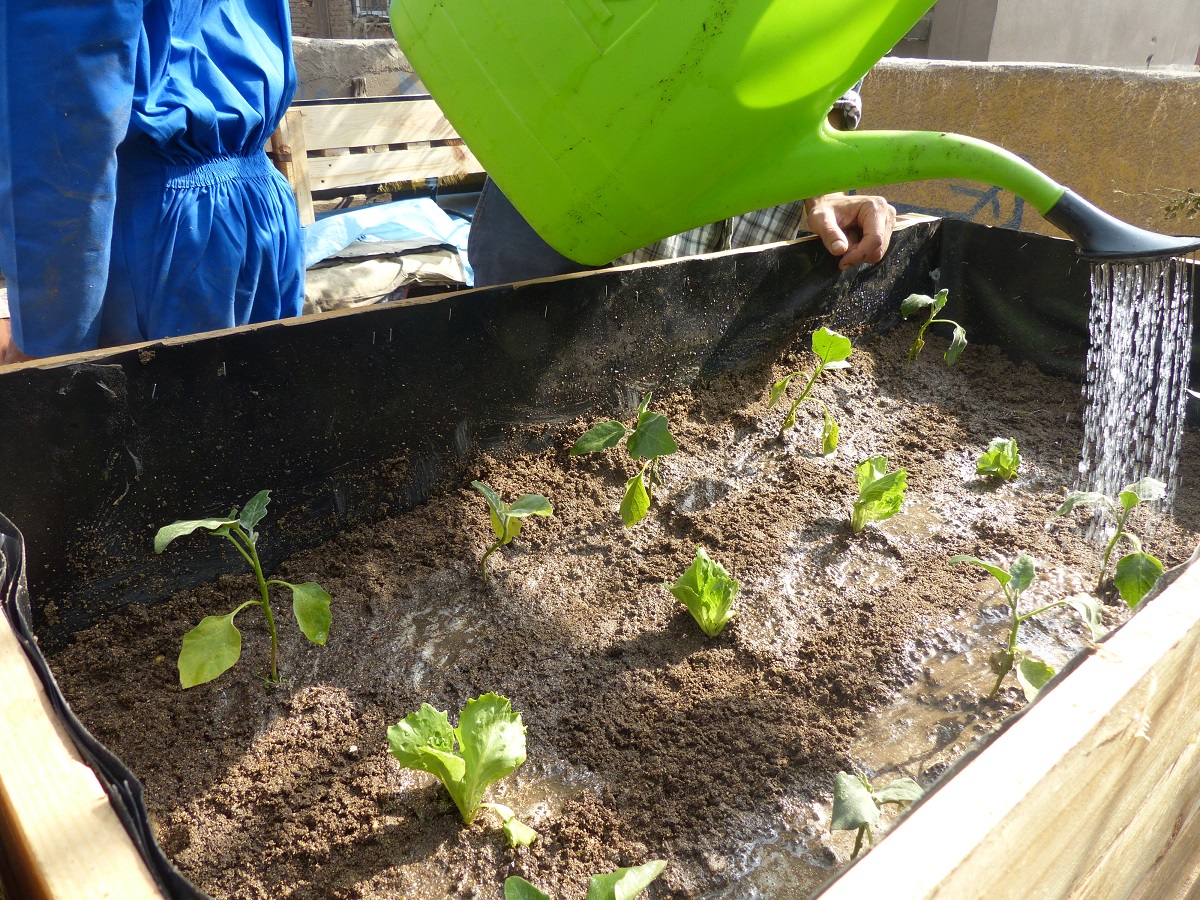

Un système de technologie hydroponique a été installé sur les toits. Le modèle se compose de 3 à 4 lits d'eau, directement attachés à chaque toit. Ils sont constitués de cadres en bois, de feuilles de plastique, de panneaux de mousse et de coupelles remplies de mousse de tourbe et de substrat de pyralite. L'eau d'une profondeur de 15 cm est alimentée par un tuyau d'eau via une connexion électrique à l'étage inférieur et entretenue par une pompe à eau et un filtre à eau. Comme alternative, le projet a installé des boîtes remplies de terre, qui ont l'avantage de ne pas nécessiter d'électricité pour la circulation de l'eau. Les plus grands défis pour les agriculteurs sur les toits ont été l'irrégularité de l'approvisionnement en eau et les coupures d'électricité, ainsi que les températures estivales élevées qui ont eu un impact négatif sur la croissance des plantes.
Le choix de la culture dépendait en grande partie de l'étude de faisabilité et de marché ; il s'agissait de trouver un juste équilibre entre une culture très demandée sur le marché et très utilisée par la population, une culture à haut rendement pour renforcer les possibilités de création de revenus et une culture capable de résister aux conditions environnementales et climatiques de la région.
Le suivi : Un système de suivi doit permettre de recueillir des données sur la production alimentaire, les revenus, les activités agricoles, les coûts/bénéfices économiques, etc. Des mesures doivent être effectuées afin d'évaluer l'impact microclimatique réel. Installation technique : Le modèle hydroponique est relativement bon marché et donc abordable. Cependant, d'autres facteurs (entretien, consommation d'eau et d'électricité, utilisation de déchets organiques et d'eaux grises, impact sur les conditions microclimatiques) doivent être pris en compte pour la mise à l'échelle. D'autres options techniques que le système hydroponique devraient être explorées. Les goulets d'étranglement techniques restants doivent être résolus par l'expérimentation sur site. Impact : les toits à microclimat devraient être protégés du rayonnement solaire direct, favoriser le refroidissement par évaporation et permettre un effet plus important grâce au regroupement spatial et à une zone de mise en œuvre plus vaste.